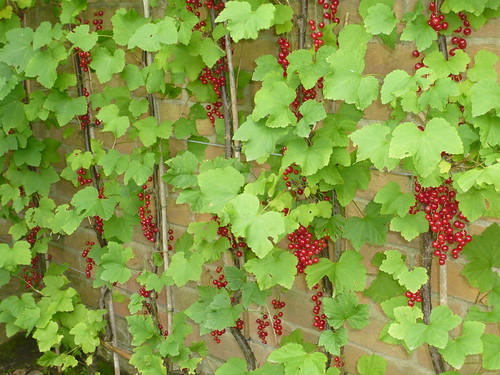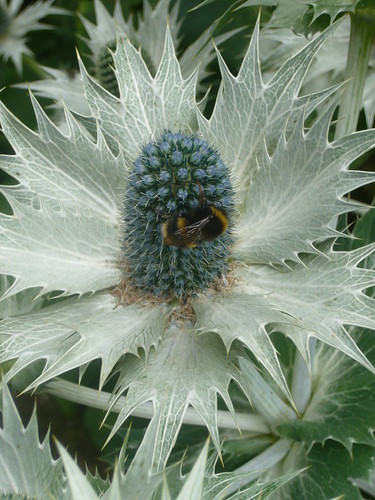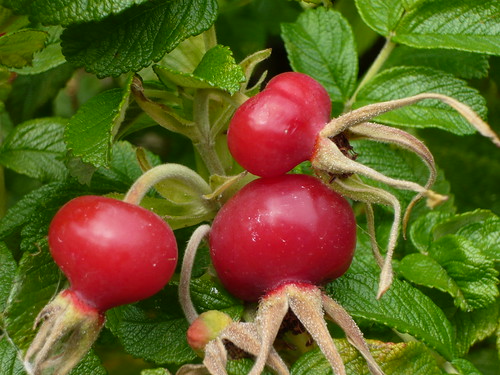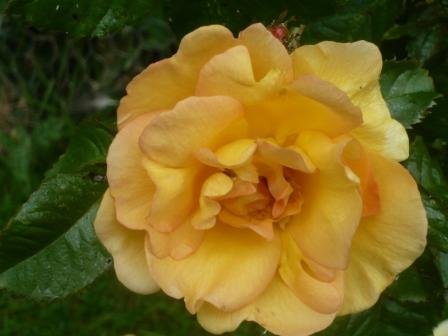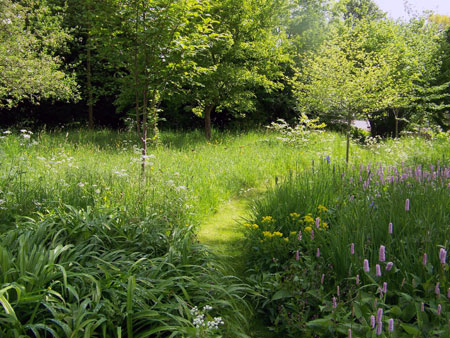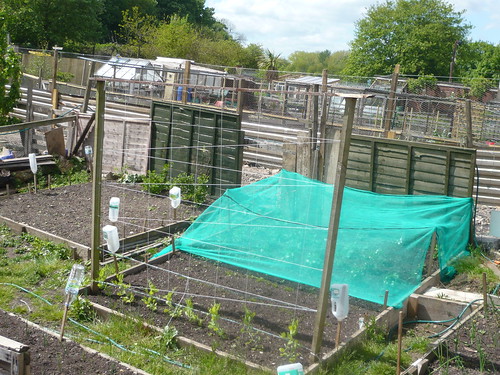
This allotment goes someway towards safety for the gardener, the allotment and the plants.
For personal safety the canes can poke out your eyes so the upturned bottles offer ugly protection. In a garden you can buy designer cane tops and if you spend a lot on the garden this may be a worthwhile finishing touch.
The trailing hose pipe could cause a trip but at least these paths are clearly marked out with the tanalised boards that also raise soil levels. Good well maintained none-slip paths are a must in the garden. Poor paths reflect on the plants, no matter how good they may be and paths are visible all year.
Most things and activities can be dangerous if used incorrectly but a bit of garden common sense particularly with sharp objects can save a lot of pain.
Get an upto date tetanus injjection just incase to prevent wound infection leading to lock jaw.
Bend the knees not the back when lifting and do not strain by over reaching.
For crop safety the mesh netting is keeping the birds off the strawberries underneath. The sun and rain can still get through and this type of fruit cageing is popular for all soft fruit.
The support for Sweet Peas is essential to help them get off the ground and support them whilst growing. They would not be safe from slugs, twisted flower stems and a poor crop yield without some protection.
Beware of communally supplied animal compost it may contain chemicals you do not want on your crops. Hormones and selective weed killers used by farmers and stables are often present in manure.
The site protection has linked fencing, barbed wire along the top and numerous fences and barriers. A bit over done for a garden but essential for an allotment that is unmanned and often out of sight.
Take valuable tools home and have a strong lock up at the allotment and or home. An old rickety shed wont stop the determined.
Valuable features like sculptures and fountains may need to be firmly fixed into the ground using special fittings to frustrate the thieves.
